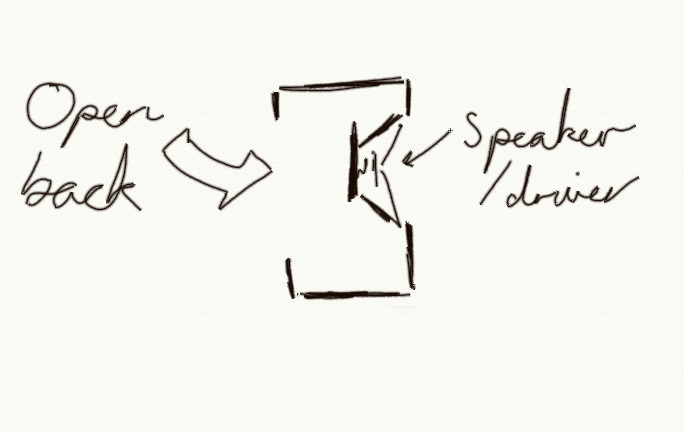Bass Amp Cab Design – Open Back Design
A little while about Mark Wright of Accugroove shared some excellent advice in: Choosing a Bass Cab – Part I and Choosing a Bass Cab – Part II. The next couple of posts add a little bit of background about the different designs of cabinet, to take away the mystery of the shapes that you see around, and follow on from the post on Bass Amp Set Ups .
Speakers are a key part of the sound, or rather the speaker(s) and the cabinet they are housed in. Cabinet design has evolved over the history of the bass guitar, and I thought it would be fun to talk about the different types of cabinet design. A kind of bass geekyness, but useful background for using and choosing cabs – if nothing else, you’ll be able to blow away the guitarist with your knowledge of acoustic cabinet design!
Early guitar cabinets, including bass ones, were “open backed” – so called because the back of the cabinet was open. That sounds a little obvious, but it was a revelation to me the first time I noticed. A quick sketch helps to explain the next bit:
You won’t see many (if any) open backed bass cabinets these days. There is a simple reason for that: The speaker in the front pushes the air as it moves. Then it does the opposite, as it goes back: it sucks the air in from the front and pushes it out of the back.
Air is surprisingly smart – it moves from the front of the cabinet to the back, and from the back to the front, running around the sides of the cabinet, trying to get back where it came from. OK, the air isn’t smart at all, it is just a bit of physics, but you get the idea. Most of the air moved by the speaker ends up going nowhere except back where it came from. That means no sound produced.
How does a closed back cabinet produce any sound then? Well, it takes the air a little while to get from the front of the cabinet, round the sides, to the back. If I just had a speaker, not in a cabinet at all, it would produce almost no sound. The air would just be rushing ‘around’ the speaker to the back. However, if I put some wood around the speaker (a “baffle”) then the air has a bit of a way to travel to get round to the back, and air actually doesn’t move that quickly. That means when the speaker is moving fast enough (a high enough frequency) the air can’t get around in time, and so sound gets produced.
The bigger the baffle, i.e. the bigger the cabinet, the longer the air takes to move (or actually the longer it takes for the pressure to equalise between the front and back of the speaker). That means lower frequencies of sound can be produced. A bass is low frequency, so to produce sound effectively the speaker would need a very large baffle, i.e. a very BIG (and very heavy) cabinet. Not so good! How do you fix that? Simple: a closed back design…

[…] «Bass Amp Cab Design – Open Back Design […]
Wow! I play guitar, but this is really useful!
Same ideas of speaker cabinet design play out there 🙂 – Although closed back’s are rarer, as they come into their own for the low notes – Us bassists don’t want too much back from our thin-stringed friends ;).